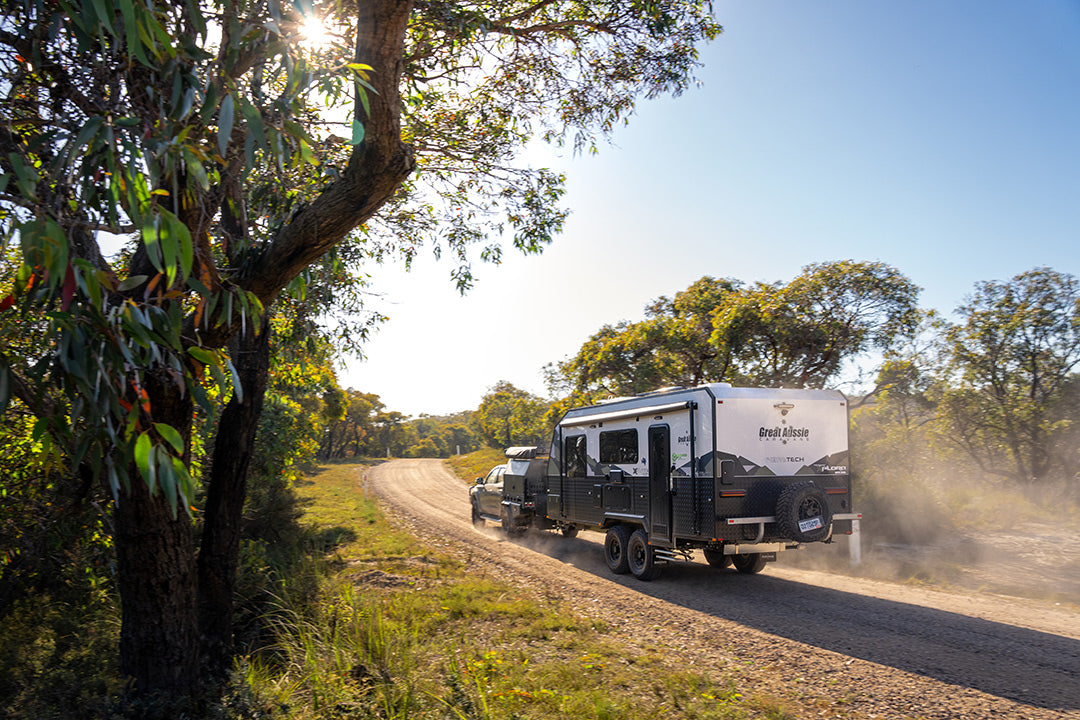The lost worlds of Limmen National Park, NT
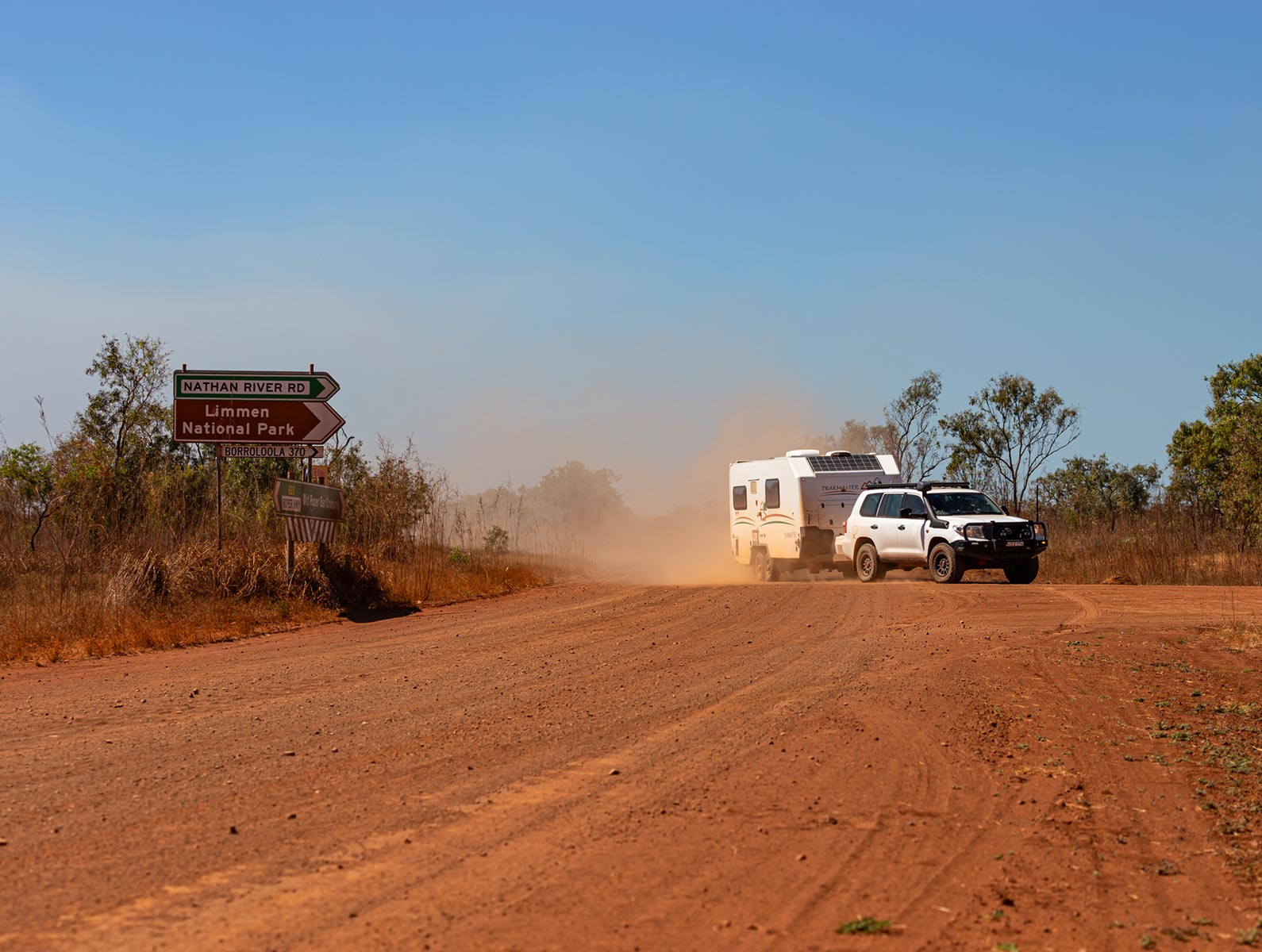
Limmen National Park is located in an isolated part of the Northern Territory Gulf Region and features spectacular rock formations, several river systems and wetlands. It is a land rich in culture and history, teeming with wildlife and waiting for you to come and explore.
The Traditional Owners of Limmen National Park are the Yanuwa, Mara, Alawa, Kurdanji, Ngalakan, Garawa and Binbinga Aboriginal people. They are affiliated with these lands and have registered sites of significance within the park. They live throughout the region and continue to maintain their links to the land.
I departed Borroloola, a major regional town in the Gulf Region situated on the banks of the McArthur River, after enjoying a couple of days of R&R. Unfortunately, there wasn’t time to visit King Ash Bay only 50km north of town. I’d heard plenty of good things about the place.
Taking the Carpentaria Highway, I headed west before turning right off the bitumen onto Ryans Bend Road, a shortcut to Limmen National Park if coming from this direction. Another option is following the bitumen 15km to Caranbirini Conservation Reserve and camping area that features weathered sandstone formations similar to the Lost Cities in Limmen National Park. You can then retrace your steps to Ryans Bend Road in the north or access Ryans Bend Road 2km west of McArthur.
Ryans Bend Road is a gravel road with corrugations in places but take your time on the crests and washouts. It is a pretty drive of approximately 51km to the Nathan River Road. The signage warning of track damage is easy to spot, lift the right foot until you know how badly the road is damaged. Nathan River Road leads through the southern section of Limmen National Park and can be rough going through the dry creek crossings, especially with a caravan. They are often steep with washed-out entry and exit. You’ll pass the Lorella Springs turn-off that sadly is currently closed to self-drive travellers as owner Rhett Walker fights to keep his Wilderness Park.
Lost cities
Access to the Southern Lost City is well signposted and it’s a 4km drive into the day area and campground. You’ll also find a drop toilet, tables and firepits. I discovered that a contained bolognese sauce had exploded in my fridge, and while I cleaned up the mess, the serenity was disturbed by helicopters on scenic flights from the Heartbreak Hotel at McArthur. They’d departed in time for me to enjoy some lunch before tackling the 2.5km walk around the Southern Lost City.
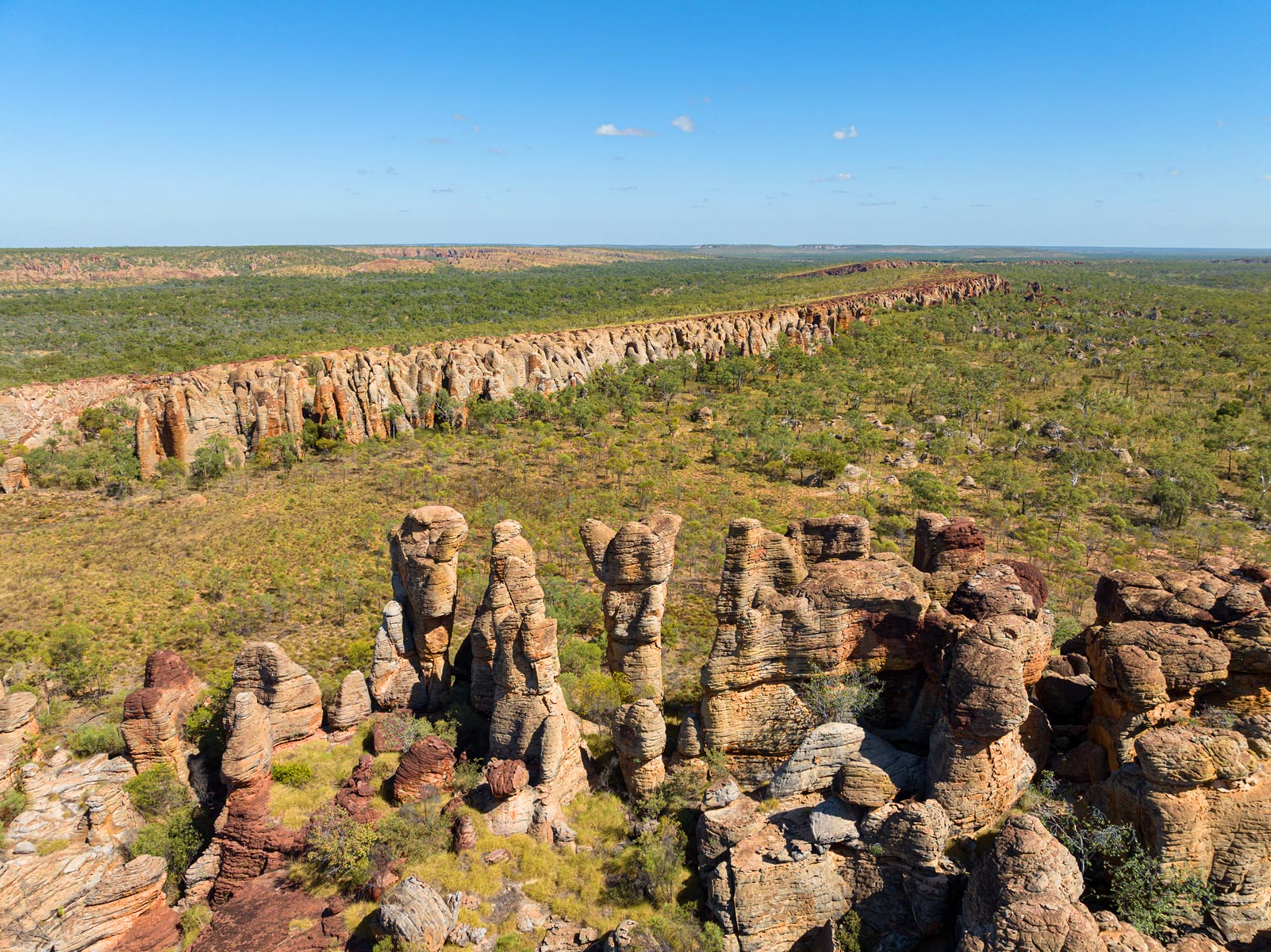
The walk is gorgeous as you wander up through the formations and follow the rocky ridge, the views across the valley to another lost city are spectacular. There is plenty of wildlife about, but the challenge is spotting it. A variety of skinks and other lizards can be heard in the pockets of leaves lying on the ground. The walk takes you up onto a ridgeline where you’ll find woollybutt trees, a favourite dining experience when flowering for the rock-haunting ringtail possum who retreats into rock crevices during the heat of the day. Shady spots in the rock ledges and overhangs also provide a cool refuge for the eastern short-eared rock wallaby. The cool shady areas are also a favourite hangout for the common crow butterfly.
The next stop was the campground at Butterfly Falls, the only place within the park considered safe to swim. The numbered campsites must be booked online before you arrive and offer enough distance from the neighbouring site that you won’t feel crowded. During the dry season, when the camp is at its busiest, the drop toilets struggle to cope. Firepits are shared between campsites, which gives it a real community feel. The waterhole is dotted with lilies and provides a cool respite from the heat. In the afternoons, hordes of butterflies find a place to land on the cool cliff walls.
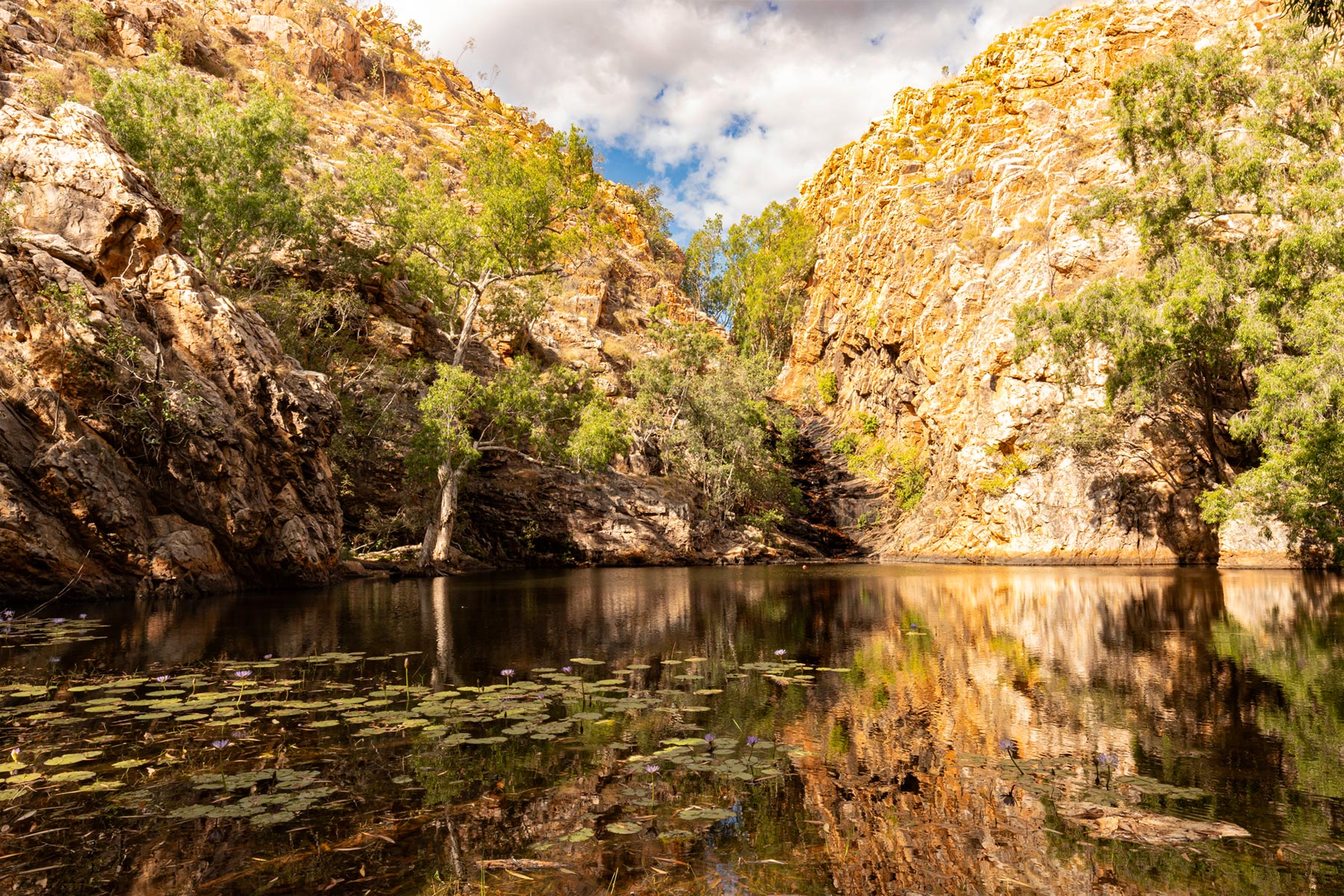 Butterfly Falls
Butterfly Falls
Access to the Western Lost City requires a combination to unlock the gate and this can be sourced from the Nathan River Ranger Station, located 9km from the Butterfly Falls Campground. Here you’ll find a visitor display and park information, flushing toilets, drinking water and 240V power (only during opening hours I discovered).
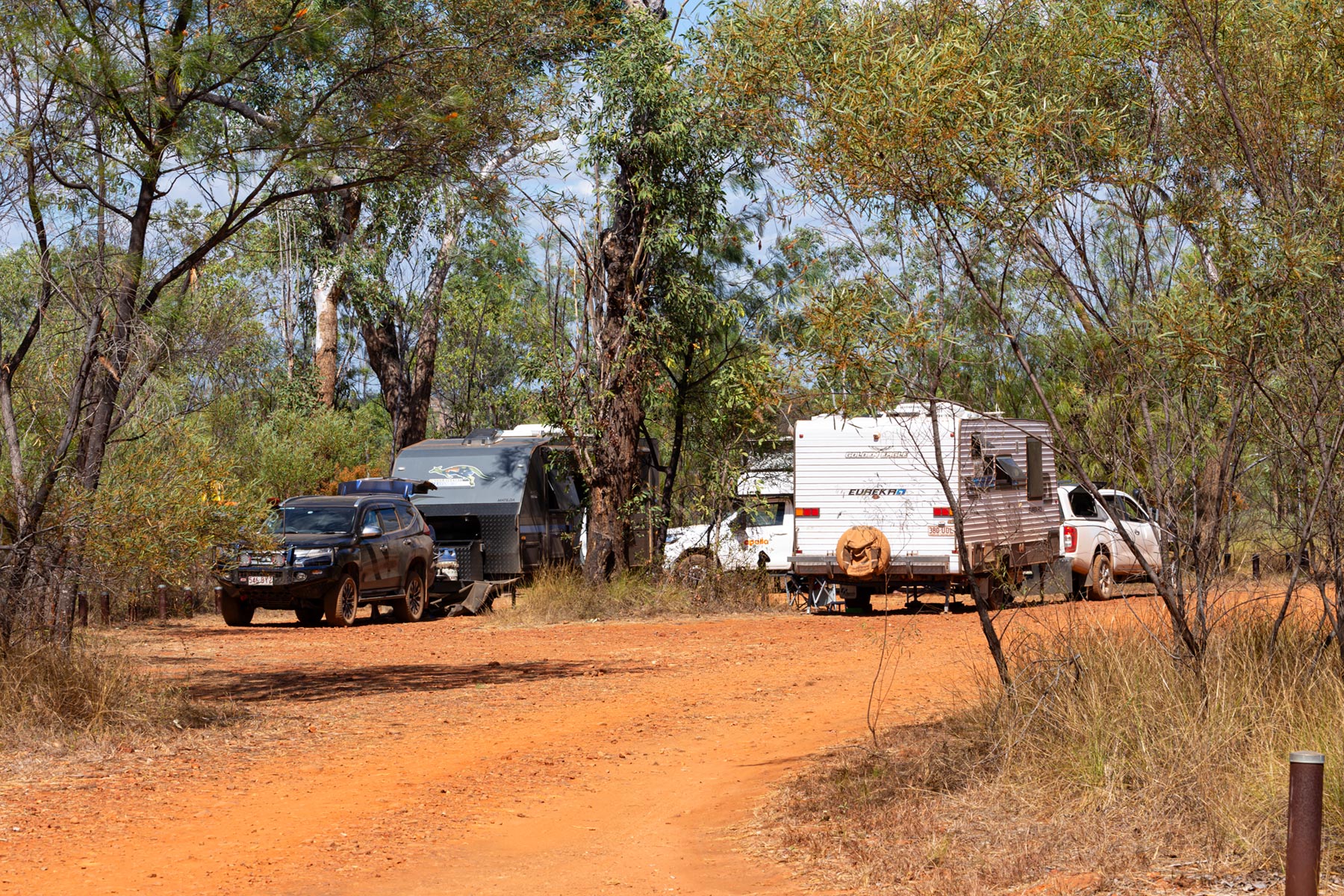 Butterfly Falls Campground
Butterfly Falls Campground
The 28km track out to the Western Lost City is for high clearance 4WDs only and the crossing of the Limmen Bight River can be sketchy, especially after rain. The drive itself takes you across grassy plains, past billabongs and through woodlands. I spotted a few water buffalo around one of the billabongs and they weren’t too happy with me being there. Wild pigs have made their presence felt, making a mess of the waterholes. It’s a pleasant drive that will leave you awestruck once you reach the lost city. The track leads you through the formations before concluding at a sandy turnaround. Take the time to stop and walk around, get up close and check out how these sandstone formations have been weathered. The sand that you are standing on was once part of the lost city.
 Limmen Bight River
Limmen Bight River
Power issues
Retrace your footsteps to return to the Nathan River Road and allow at least four hours to complete the entire journey. I returned to camp and enjoyed another refreshing swim. I discovered that my lithium battery wasn’t charging properly, so even though the state of charge (SOC) was 95 per cent, the battery voltage was only 12.9V or 20 per cent capacity and as I finished cooking dinner, the lights went out and the fridge stopped working. The internal battery management system (BMS) had shut the battery down.
Quickly packing down the rooftop tent and awning, I used my NRGVault battery pack to give the BMS a kick and a 240V charge until the battery pack was drained. I then drove up to the ranger’s station to see if the 240V power point could be used to recharge the lithium battery. Unfortunately, there was no power, so I ended up driving up and down the road for the next four hours, adding a trickle charge to the lithium battery and power pack. Eventually, the voltage reached 13.2V so I returned to camp, set up my roof top tent again and went to bed, praying that the battery would last until morning and the fridge full of meat was still running.
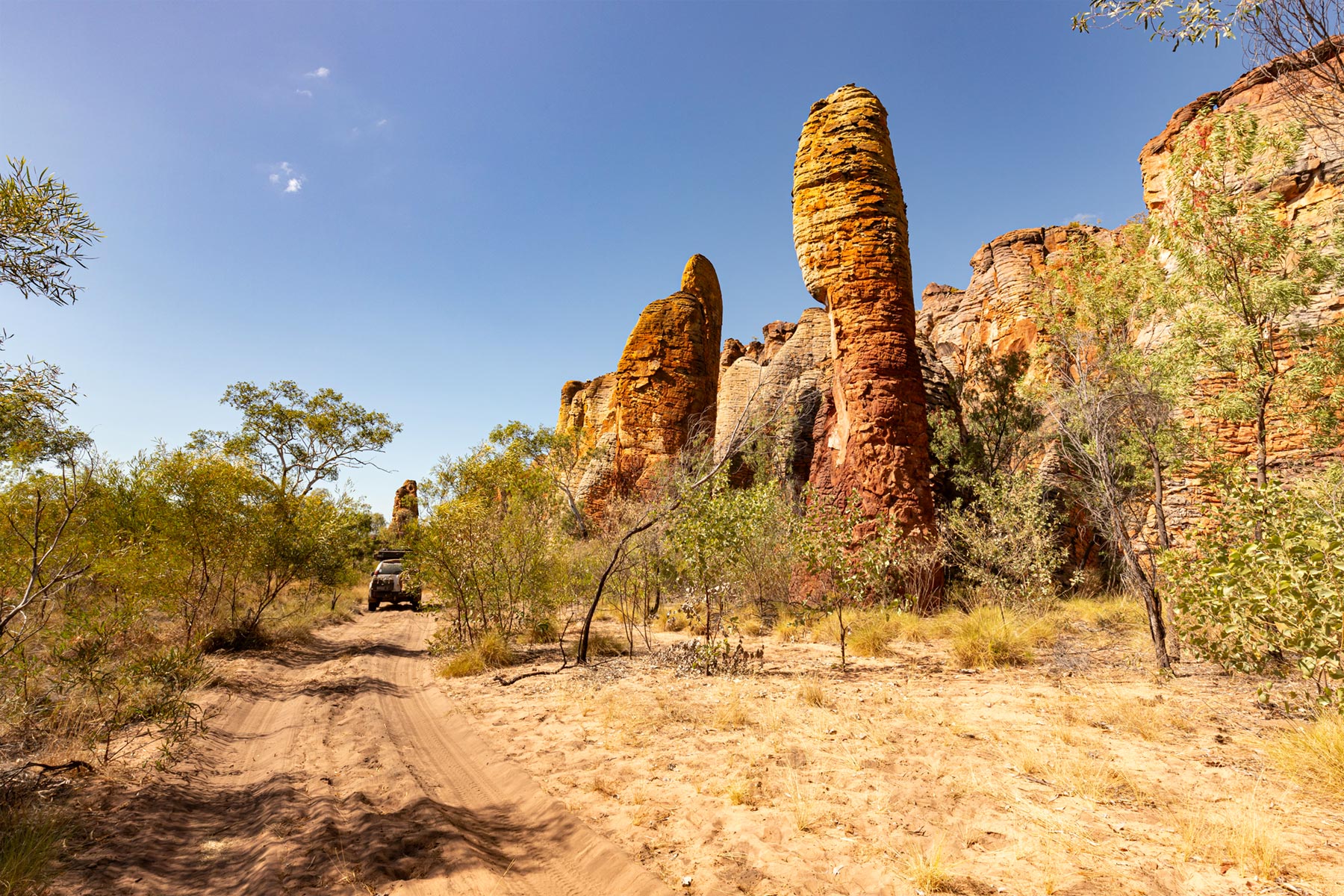
As I needed 240V power to recharge the lithium to 13.6V, it was time to move on and head to Mataranka, 390km away, and a powered site. Rising early, I was thankful that my prayers had been answered and the fridge was still running. The battery was sitting at 12.8V or 17 per cent capacity so the sooner I reached Mataranka, the better. I decided not to rush too much, though, as the road could still throw up challenges and there is still plenty to see on the way.
It was a misty morning and it felt surreal driving north, past the Limmen River Camping area and crossing the river itself. The mist began to lift as I approached the Towns River and another of the designated camping areas within the park. The road was in good condition, and I only passed a couple of other 4WDs towing boats.
Roadside reunion
Upon reaching the junction with the Port Roper Road the road widened and the open plains covered in termite nests returned. I stopped at the St Vidgeon Homestead ruins and Lomarieum Lagoon, a ripper spot to stop for a few hours to watch the water birds or try and spot a big saltie. Passing Munbililla (Tomato Island) Campground, I was surprised to see the number of facilities here including toilets, hot showers, gas barbecues, a boat ramp and Telstra 4G.
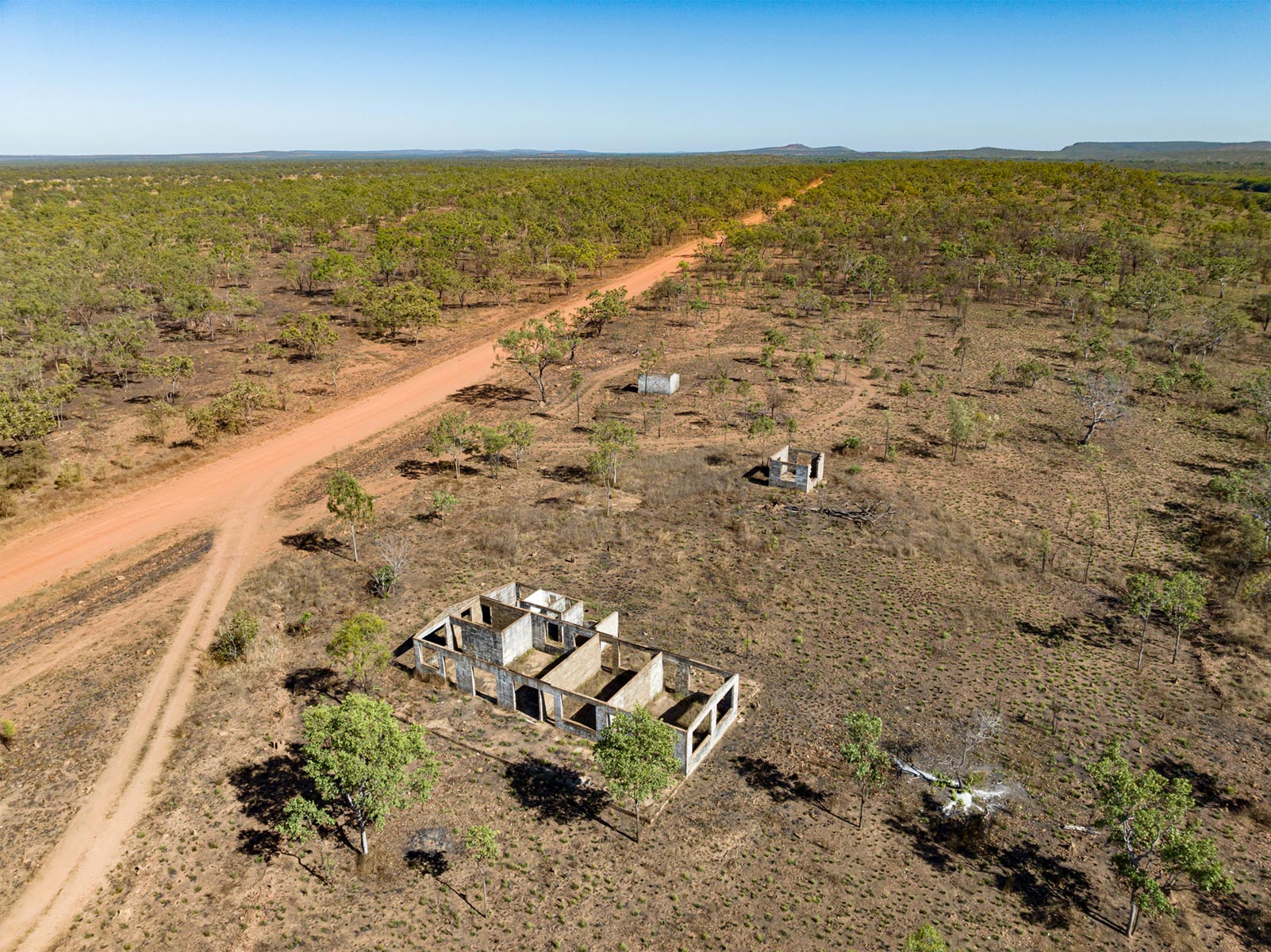 St Vidgeon Homestead ruins
St Vidgeon Homestead ruins
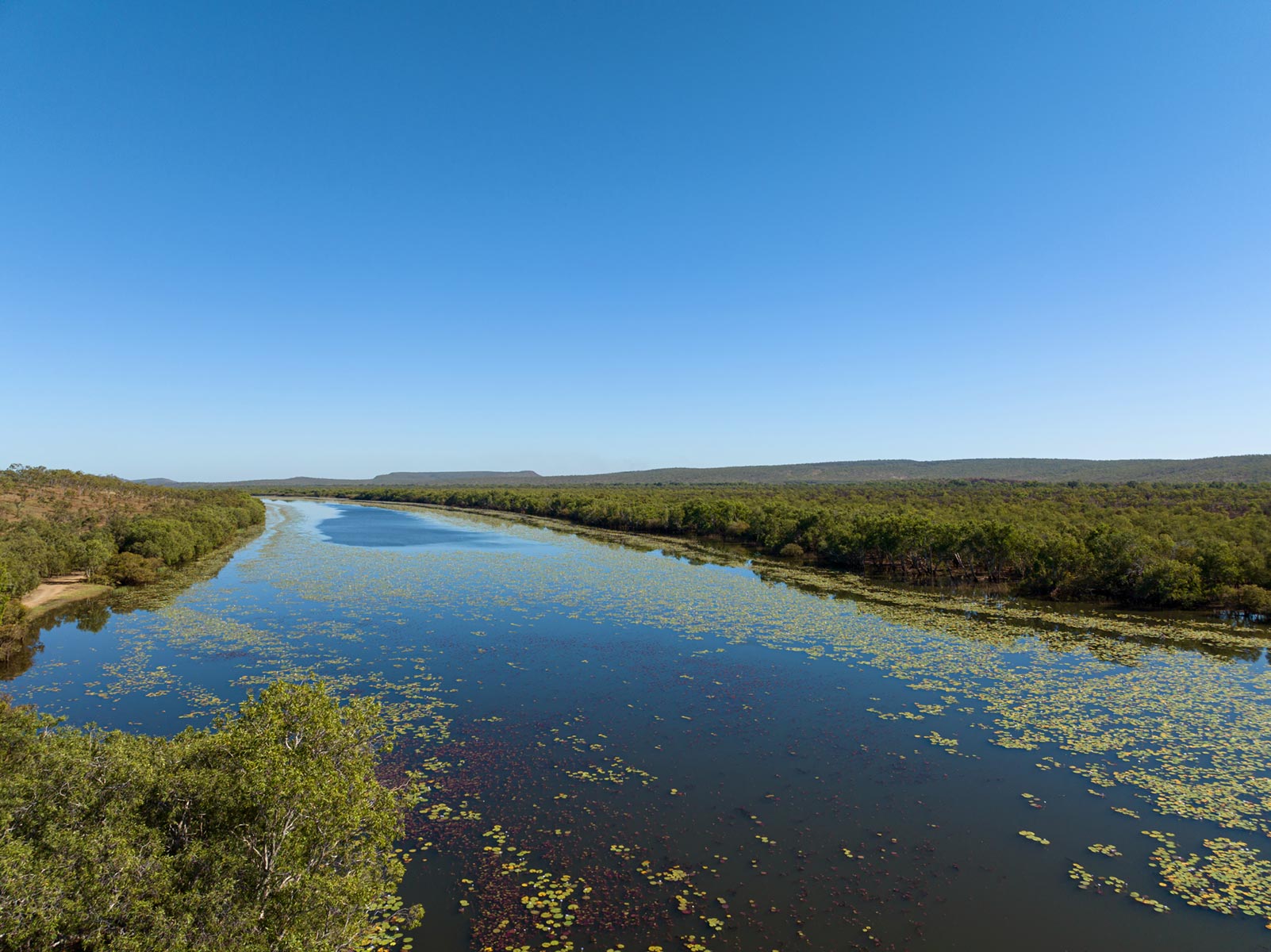 Lomarieum Lagoon
Lomarieum Lagoon
As I reached the turn-off to Roper River, I ran into John Ford, Editor-At-Large of Caravan World! After a quick chat and group photo, we headed to the Roper River Roadhouse only to find it was closed. Going our separate ways, I soon hit the bitumen and on reaching a roadside stop it was time for lunch and to pump some air back into the tyres. From here it wasn’t long before I reached Mataranka, heading straight to the Mataranka Homestead Tourist Resort and a powered site.
While it was disappointing that time was lost in Limmen National Park, it is such an interesting place with remnants of the Arnhem Land Plateau running through the park, the weathered sandstone spires and domes of the Lost City formations, the vast woodlands, billabongs and flowing rivers. Book early and stay as long as you can — this national park is well worth the visit.
Travel planner
Limmen National Park is situated in the Northern Territory Gulf Region and is accessed from the south via the Savannah Way or Carpentaria Highway and the Roper Highway from Mataranka in the north.
The Nathan River Ranger Station has information storyboards and displays, toilets, drinking water and 240V power.
Camping options:
- Southern Lost City — composting toilets, wood barbecues, picnic tables
- Butterfly Falls — composting toilets, picnic tables, firepits
- Limmen Bight River — drop toilets, firepits, tables
- Towns River — boat ramp, drop toilet, firepits
- Didi Baba — drop toilet, tables, firepits
- Yurrlmundji — drop toilet, firepits
- Mountain Creek — drop toilets, firepits, boat ramp
- Munbililla (Tomato Island) — toilets, hot showers, gas barbecues, tables, boat ramp, Telstra 4G
All sites must be booked online before arrival and facilities are minimal in most camping areas.
Contact nt.gov.au for more information and booking campsites.
A Northern Territory Parks Pass is also required to access the Park and can be purchased online here.
The best time to visit is during the cooler dry season from April to September.
Prepare to be self-reliant during your visit as services are limited within the region. Carry plenty of food, water and fuel, an air compressor and tyre deflator, a first aid kit and snake bite kit and a satellite phone or Starlink for communications. Leave the place better than you found it, tread lightly, leave only footprints and take only photos.
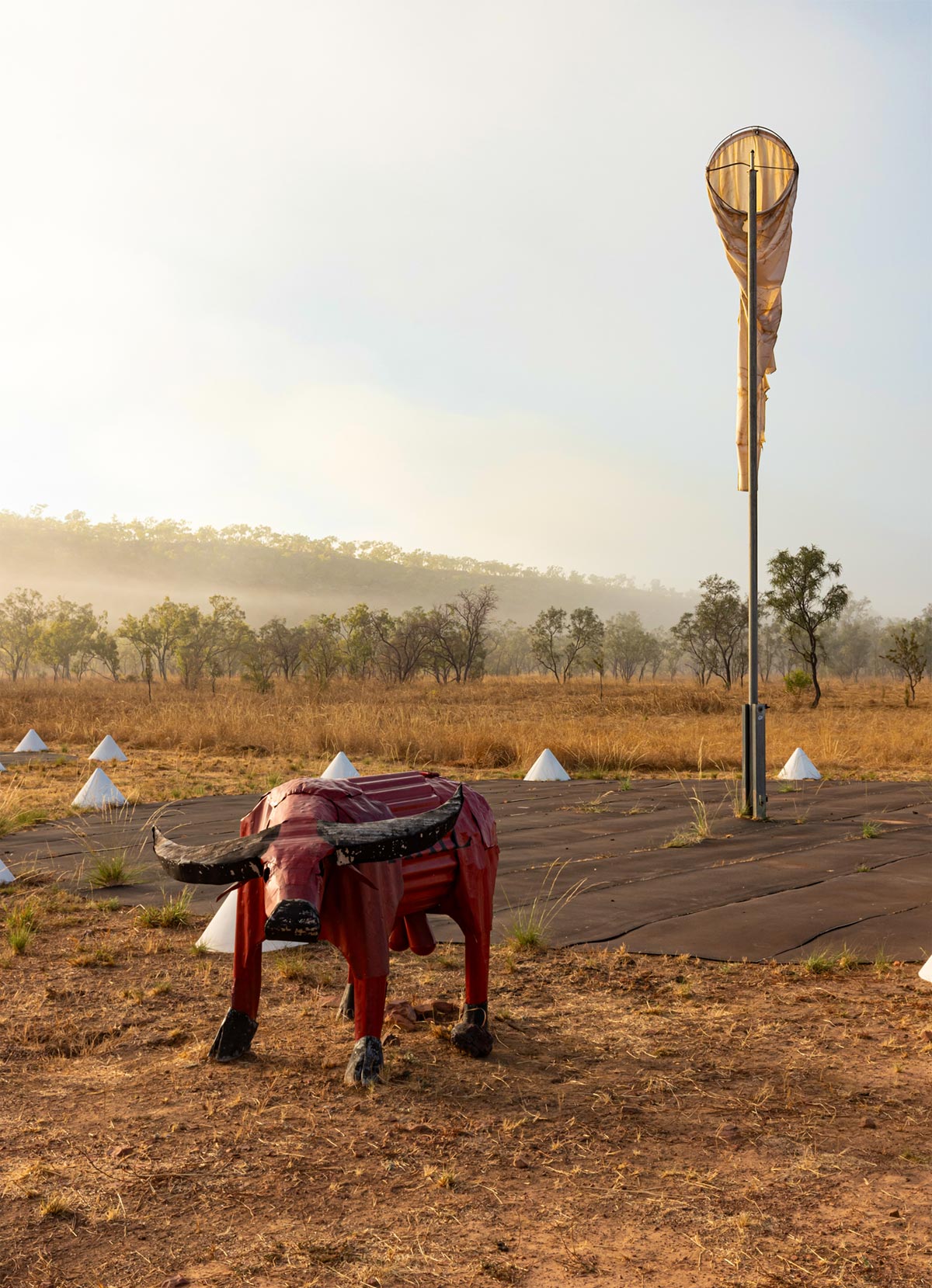 The Mail Bull near the Rangers Station
The Mail Bull near the Rangers Station
THE NEXT STEP
Are you ready to experience the freedom of the open road? Don't wait - Find your dream getaway now!






